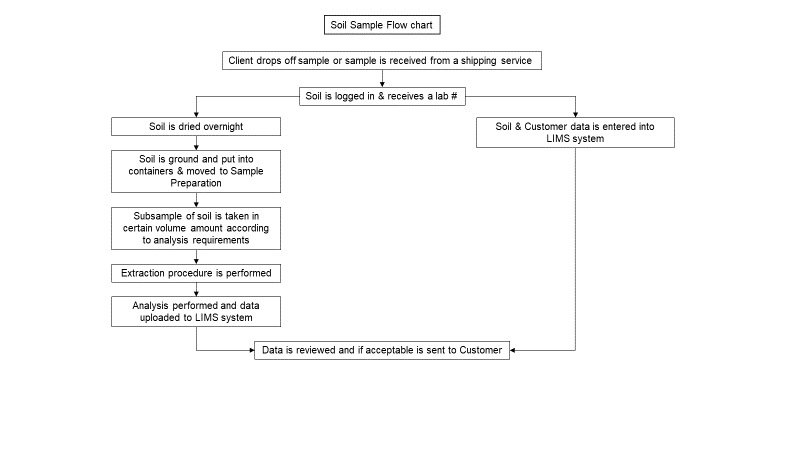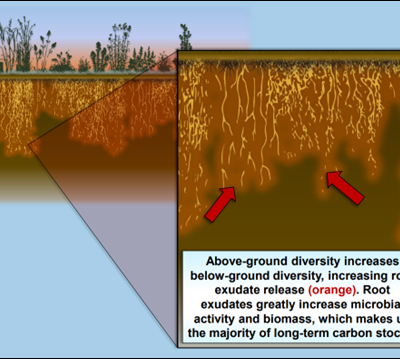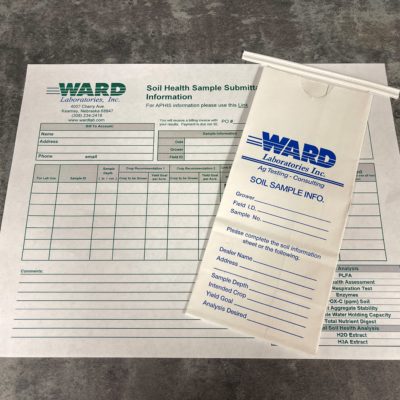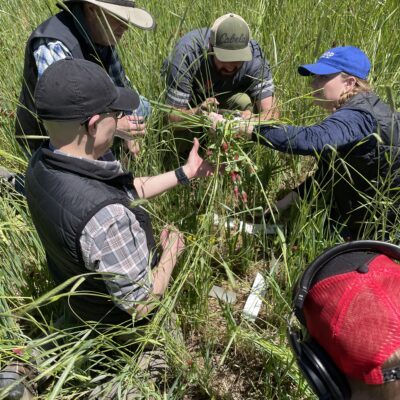I’d be willing to wager that if you are reading this blog, you’ve probably submitted either soil, water, feed, or another of the numerous things we test, to Ward Laboratories, INC. Then, once you’ve received your results you’ve probably called in and been able to talk to either Dr. Nick, or Dr. Ray and had your results interpreted. But have you ever wondered, “How do I know that the results I received and just had interpreted are correct?” Well, that’s where Quality Assurance and Quality Control comes into the equation.
As the Quality Assurance / Quality Control (QA/QC) Manager here at Ward Laboratories, it’s my job as well as all of our data reviewers, to make sure that the data we send you, the customer, are accurate, precise, and correct. How do we do that, you ask? Well let me tell you all about it.
Quality, from the Start
Our QC process starts even before we receive your sample(s). How is that possible? Well the submission sheets on our website, https://www.wardlab.com/sample-submission/ , tell you how and what to submit. They also ensure we know exactly what to do with your sample as soon as it hits the door when filled out correctly. Did you also know that Ward Labs provides our customers sample bags (soil/feed/plants/manure) and bottles (water/slurry), if requested?
… in the door now what?
Next once your sample with the appropriate/correct submission form has arrived at Ward, our Sample Log-in staff rigorously parse through the hundreds to thousands of samples we receive daily, and sort them all. So your samples and the processes and tests you want performed are noted and kept together. It’s a big job.
Once logged in to our in house Laboratory Information System, depending on what you sent us, they go to their proper next step, whether that be drying, in a temperature controlled drying room, or to the temperature controlled fridge for water samples. Notice I keep saying controlled, what does that mean? Each of these places are monitored to make sure that the temperatures are consistent so that we stay in ranges determined to be affective in our process. That’s a big part of quality, making sure what we say is what we do.

Now, for ease of explanation, we’ll narrow down now to just Soil samples (see above for sample flow chart). After drying, technicians grind the sample and then deliver it to sample preparation. The sample prep techs are in charge of scooping the correct volume of sample into Erlenmeyer flasks, and then performing the extractions on the soil.
Write it down, in blue pen.
When we make our extracting solutions every chemical we use, its lot number and expiration date are logged so that we know we are using chemicals and materials that are up to snuff. We document all written records in blue pen. That way if copies are made, we can still find the original. Then we filter the samples. So that we have a liquid that should contain the nutrient or element you were wondering about.
After extraction and filtering, sample preparation technicians deliver the samples to the laboratory, and our educated and well trained laboratory technicians take over from there. If you are wondering what your calcium, potassium, or nitrogen levels are in your soil, well we have the test to tell you. We are also always developing new tests to meet the needs of our loyal customers.
SOP, it’s how we do what we do.
We use methods/SOPs (standard operating procedures) that are standard and thorough throughout our process. They come from different sources, AOAC (Association of Analytical Chemists), NCR-13 (North Central Region-13), EPA (Environmental Protection Agency), etc. Ultimately,our methods are standard. A consensus of scientists has agreed upon them and validated them to be used to determine levels of an analyte (whatever element or nutrient that you were looking for.) Our SOPs are reviewed internally by no less than three experts along the way to being reviewed and approved for in house use.
To ensure the quality of data that is produced on all of our instruments, the instruments are calibrated on schedule, and during each run we analyze several quality checks that are of a known location, and blind checks, which are a sample with a known concentration inserted randomly and assigned a normal lab number, so the lab technicians are unaware when the sample is coming. Along with that we also analyze Quality Control Standards (QCS) usually every 10% of a run. For example, if we run 300 samples on a run, we would analyze the Quality Control standard 30 times. Each time it is run it is, checked against the initial calibration of the instrument and as long as it is within the analytical range we need, the run continues, if not we re run the QCS, or re-calibrate the instrument depending on certain factors.
Reviewers, our last defense.
Once all the data is generated it’s submitted to our in house laboratory information system/database. Once there our reviewers can see the data, and using decades of experience as well as education and diverse training, interpret the data and ensure that it meets our standard of quality and makes sense.
This is big, because if our data doesn’t make sense to us, it won’t make sense to you either!
Quality results out the door to a producer near you!
Now you know a little bit more about the process your sample goes through as it enters the door and is tested and delivered to you via information on your soil, water, feed, etc. As well as the rigors of tests and quality assurance and quality controls that are passed in order for you to get your results.




